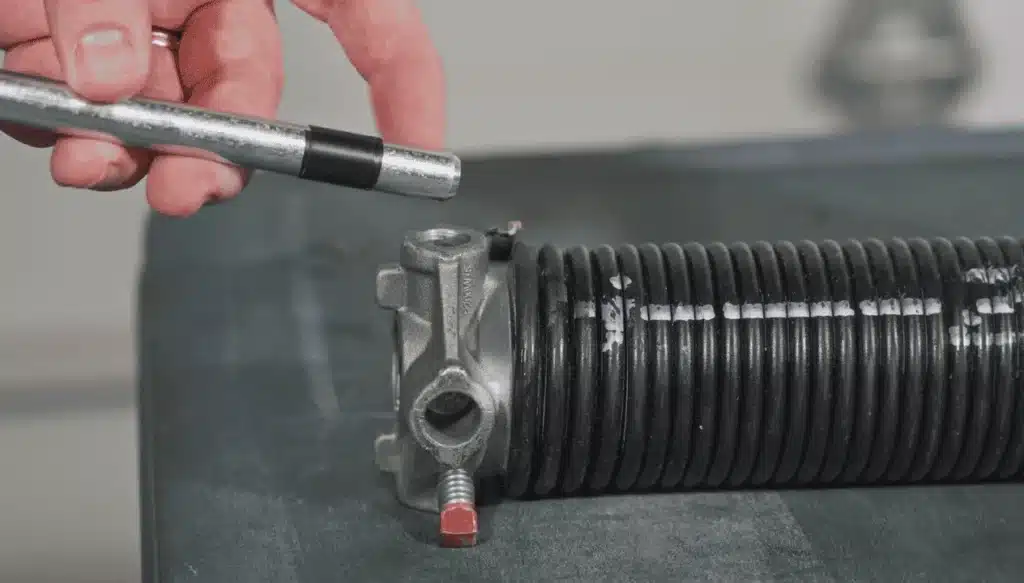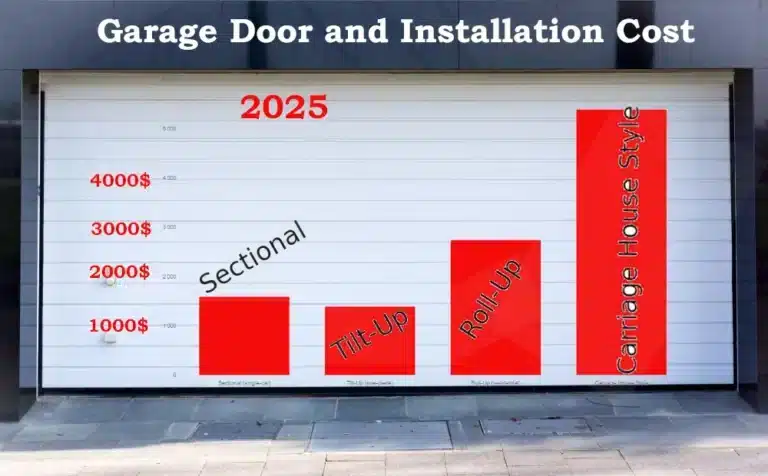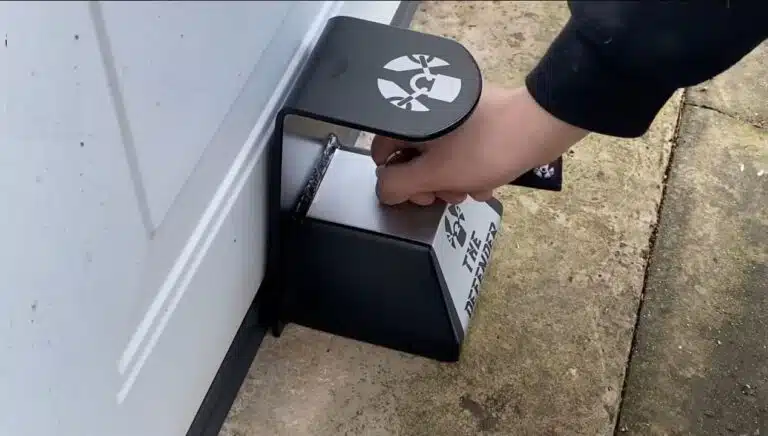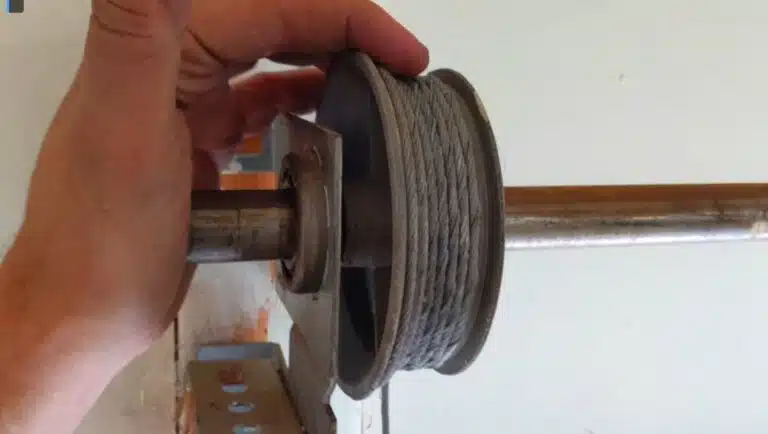The operation of your garage door depends critically on garage door springs. Constant pressure and strain these springs experience causes them to eventually wear out. Should they fail, your garage door may not open or close correctly, therefore compromising safety and causing annoyance. This manual will coach you methodically through the process of changing your garage door springs. Although this is a broad summary, always consult the particular manual for your garage door for precise directions.
Understanding the Types of Garage Door Springs
One should be familiar with the several kinds of garage door springs before starting the replacement process. There are two main kinds:
- Torsion Springs: Mounted horizontal above the garage door are torsion springs. Torsion springs twist and coile to store energy as the door opens or closes. Their lifetime and durability surpass those of extension springs.
- Extension Springs: Rising on either side of the door, extension springs run parallel to the tracks. These springs stretch out to store energy as the door opens.
Most residential garage doors use torsion springs, but it’s essential to confirm which type your garage door has before proceeding with any repairs.
Step-by-Step Guide to Replacing Garage Door Springs
Step 1: Gather Necessary Tools and Safety Equipment
If you replace garage door springs incorrectly, it can be dangerous; hence, be sure you have the right tools and safety gear. These are some necessary instruments:
- Winding bars (for torsion springs)
- Socket wrench set
- Adjustable wrench
- Clamps
- Safety glasses
- Work gloves
- Ladder
Also make sure the type and size of your garage door call for replacement springs. Inappropriate springs can lead to improper function and more wear on other parts.
Step 2: Disconnect the Garage Door Opener
Safety first; always disable the garage door opener before beginning any repairs. This guarantees that it won move inadvertently even when you’re working on the door. Unplug the opener to guarantee completely off.
Step 3: Secure the Garage Door in Place
Fix the garage door in place with locking pliers or clamps. This is a very important step since it keeps the door from sliding during spring replacement. Attaching the clamps to the rails directly below the lowest set of rollers will help to maintain the door tightly locked.
Step 4: Release Tension in the Springs
Release of the tension in the torsion springs comes next. Here’s where winding bars find application. Slide a winding bar into the cone and use a socket wrench to free the set screws. Turn the winding bar slowly and deliberately to gently and methodically lower the tension in the springs.
During this stage, you should proceed carefully since improperly handled springs under stress might snap violently. Make sure you follow this step exactly as the handbook for your garage door advises.
Extensive springs require you to release the tension by first removing the safety cables then the springs themselves.
Step 5: Remove the Old Springs
Release the tension completely then take out the old springs. Starting with detaching the wires and unbolting the springs from the center bracket, if you have torsion springs Slide the springs off the torsion bar then totally remove them.
Extensive springs require you to carefully unhook any safety wires or pulleys attached to their mounting bracket and remove the springs from their bracket.
Step 6: Install the New Springs
Once the old springs have been removed, timing for installing the new ones is crucial. Check once more to be sure the replacement springs in both type and size match your garage door.
For torsion springs:
- Slide the new spring on the torsion bar and orient it according manufacturer recommendations.
- Refasten the spring to the middle bracket and examine its security.
- Once set, reattach the cables to their correct positions.
For extension springs:
- Reattache any safety cables or pulleys then mount the replacement spring to the matching bracket.
- Make sure the spring runs exactly with the track and the door.
Step 7: Wind the Torsion Springs (for Torsion Spring Systems)
This stage is only relevant if you deal with torsion springs. With your winding bars, wind the springs. Start rotating the first winding bar within the winding cone to wound the spring. For the proper number of turns—which will rely on the weight and size of your garage door—follow the manufacturer’s directions.
Tightly fasten the set screws once the spring is fully coiled.
Step 8: Test the Garage Door’s Balance
Hand checking the garage door opener will help you to guarantee its correct balance before you re-connect it. Open the door half-way and let it fly. Should the door stay in place, the equilibrium is excellent. Should it rise or sink, the tension in the springs needs adjustment.
If the door is too heavy or difficult to operate, you may not have wound the springs sufficient or have the proper type of spring installed. If the door looks to be overly light and wants to raise, the springs could be overwound.
Step 9: Reconnect the Garage Door Opener
The garage door opener can be reconnected when the door moves without difficulties and is balanced. Plug the opener back in and conduct a few test runs with the remote control to be sure everything is operating as it should. Track the door as it opens and closes; listen for any strange noises or issues.
Safety Tips for Replacing Garage Door Springs
- Use the Right Tools: Never try to replace garage door springs without the right tools. Torsion springs depend on winding bars, hence using the incorrect tools could cause damage.
- Take Precautions: Wear gloves and eyewear among other safety gear to guard against inadvertent accidents. Under a lot of tension, torsion springs can be harmful if improperly handled.
- Seek Professional Help If Necessary: Hiring a professional garage door specialist is always a terrific choice if you’re not sure about any element of the replacement operation or if you’re not sure your capacity to handle the springs safely. While making a replacement yourself can save money, safety always comes first.
How Long Do Garage Door Springs Last?
Usually counting in cycles, garage door springs have a limited lifetime. One cycle consists in the door opening and closing in its whole. For the typical homeowner, garage door springs last roughly 10,000 cycles, which equates to between 7 and 10 years. Still, variables including use frequency, climate, and maintenance can affect the longevity.
Should you find your garage door opening or closing more slowly than usual or hear loud squeaking or popping noises, your springs might be nearing the end of their life.
Why You Should Replace Both Springs
Should only one of the two springs in your garage door break, it is advised to repair both springs simultaneously. Springs age similarly, hence if one breaks, the other is probably close to the end of their lifetime. Changing both springs at once will spare you the effort and expenses of executing the work once more in not too distant future.
Although this is a good do-it-yourself project, replacing your garage door springs requires proper tools, close attention to detail, and safety precautions. Whether you have torsion or extension springs, following the instructions provided will help you to do the work fast and securely. Still, should you feel uncertain or dubious at any stage, it is always advisable to see a professional to ensure your garage door is safe and operational. The Cost to Replace Garage Door Springs will depend on whether you employ a professional or replace garage door springs yourself.









